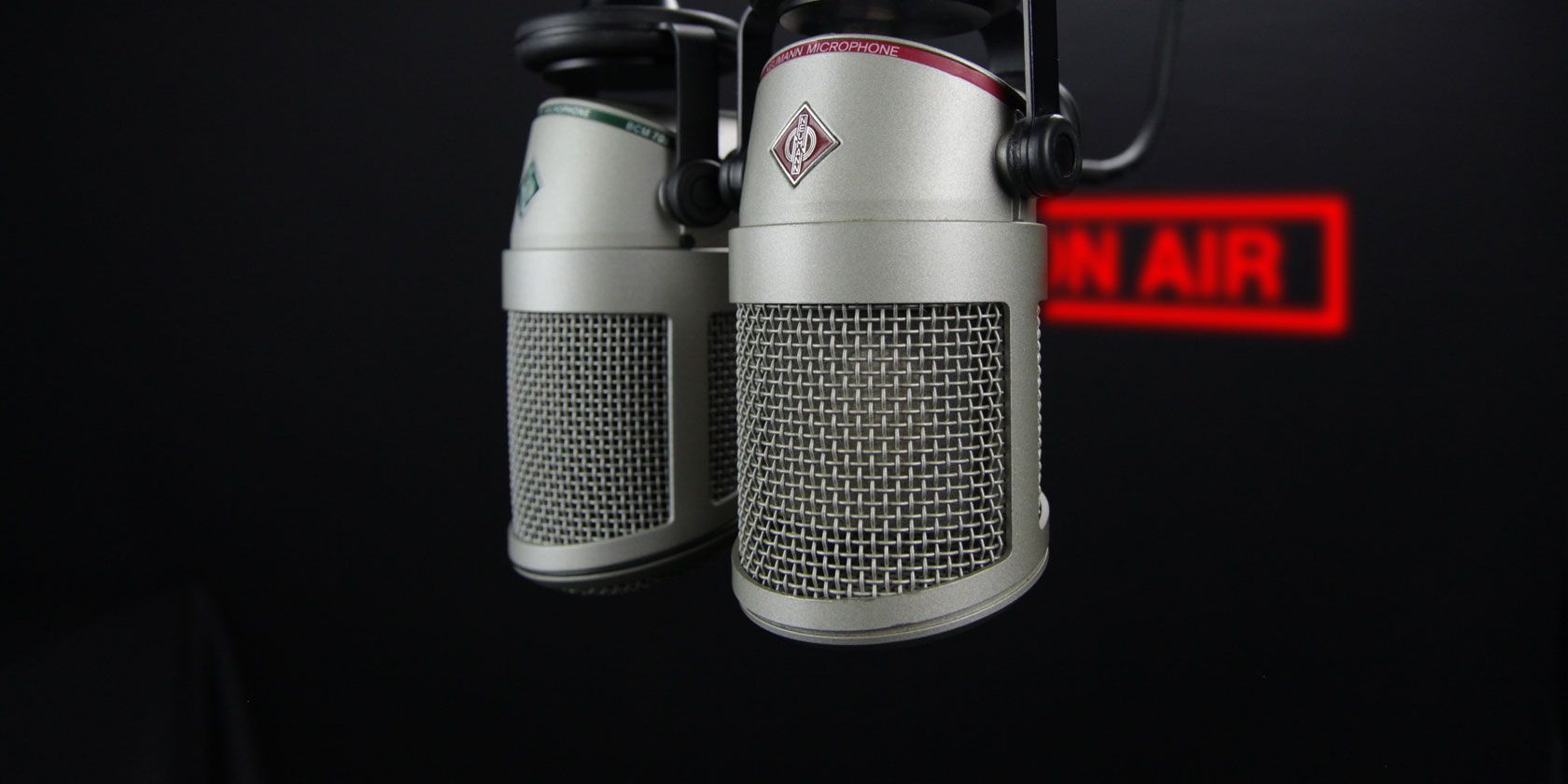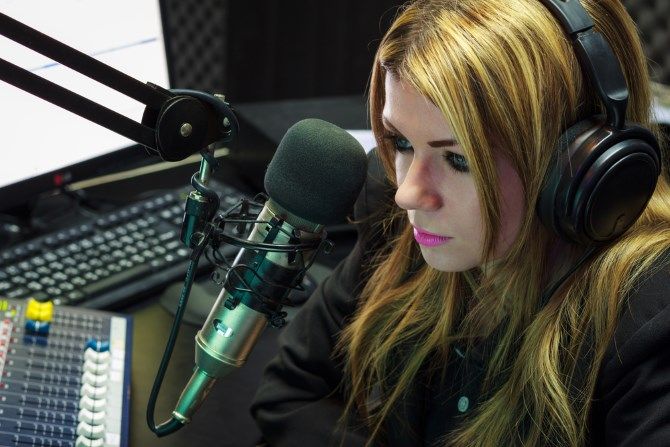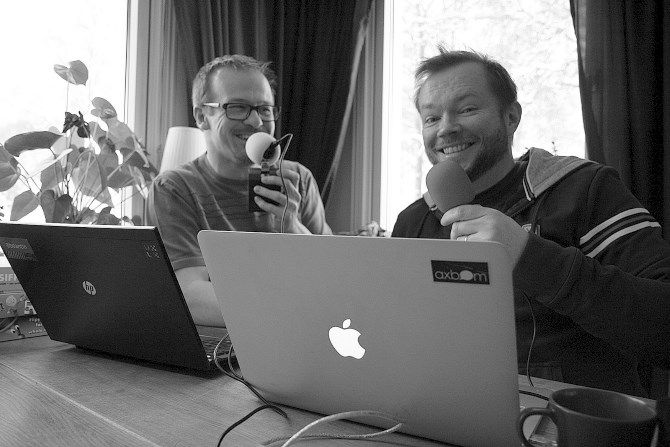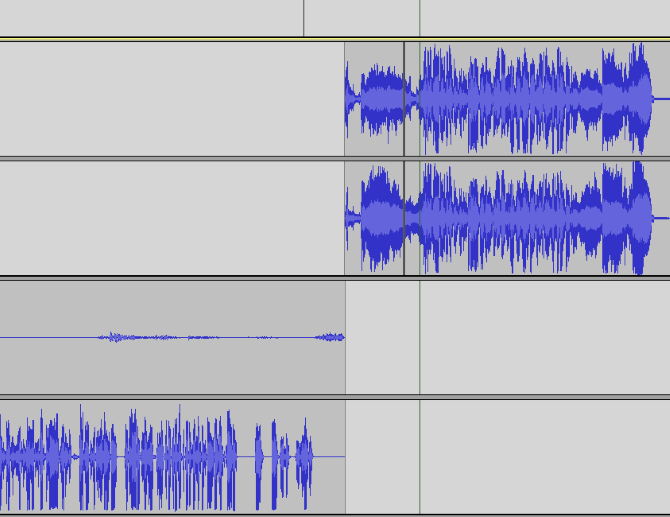Your podcast could probably be better. Perhaps you followed our guide to launching a successful podcast. You might have picked up our tips for streamlining your podcast post-production. But you've noticed the podcast is flagging, and you don't know what to do about it.
Perhaps you should put an end to it and put your solitary remaining listener out of their misery. Then again, if you still have a listener who isn't your mom, perhaps the best option is to keep going. After all, you're clearly doing something that someone likes. But how can you rebuild the audience?
The smart option is to reformat the podcast. This means looking at the podcast you have now, assessing just what it is, and introducing some new concepts.
No matter which format you settle on, be sure to encourage your listeners to rate and review your podcast.
So which podcast type are you currently using? There are, strictly speaking, five podcast types.
1. The Solo Podcast
This might be the podcast you started off with. Basically, you and the listener, chatting away, sharing your thoughts on whatever your podcast topic might be. These days, the solo podcast is limited to very particular niches. For instance, you might be a comedian or a musician. The solo podcast, therefore, is ideal for you to share your unique slant on the world.
While it might seem like an easy solution (and it is when it comes to production), the solo podcast isn't for everyone. If you're unsure of your point of view on a subject, for instance, then you might find yourself drying up (that is, running out of things to say, or losing your thread). It's a good idea, therefore, to have a plan: a format. For a solo show, that might be:
- Introduction
- Topic A
- Transition
- Topic B
- Etc.
- Summary
- Outro
When it comes to production, all you need to do is grab a microphone, find an audio recording app, hit record, and start talking. This is possible on virtually any device, which means you could conceivably publish podcasts on a daily basis (although this is perhaps too regular in most cases).
Looking for a place to host your show? Here are several reasons to choose SoundCloud to host your podcast.
2. The Podcast Interview
Talking to yourself on a weekly basis can be dull. Even if you liven things up with radio show-style sound effects, just chatting on and on, even with a plan, can prove somewhat limiting.
But if you're talking on a specialist topic, it's always a good idea to get input from a fellow expert. To begin with, it gives the audience another voice to listen to. You might well have silky tones that rival Morgan Freeman himself, but there should always be room for someone else.
How do you bring a guest into the podcast? Several options are available:
- Telephone -- Record the interview on your smartphone using a call recording app. You'll need to sync the data to your computer for editing (unless you have the tools to edit and upload on your phone).
- Skype -- If you don't have a smartphone, you can use Skype on your desktop to call other Skype accounts and telephones. With a Skype call recording tool, the audio will be captured and you'll be able to package it into your podcast later.
- One-on-One -- The final option is to make sure you can get a microphone under the nose of the person you're interviewing. This may require you to spend money on additional hardware, but the end results should be good. Just remember to check the sound levels before recording commences.
The format for a podcast interview would look something like this:
- Introduction
- Introduce guest
- Discussion
- Summary
- Outro
Clearly, an interview scenario has greater time overheads than a solo podcast. It can also require more software, sound hardware, or both. However, the results can be superb.
3. The Multi-Host Show
For a more varied collection of voices and opinions on a regular basis, the multi-host show is the way to go. Indeed, many podcasters use this option to start with. After all, if you dry up, there's always someone else available to take up the slack. Execution of a multi-host show can be tricky, however.
You basically have two options: online (which means embracing Skype, Google Hangouts, or another VOIP option), while recording the call (preferably at both ends, just in case one of the recordings fails), and offline. The latter can potentially have a travel overhead for one or more hosts, however. You should also consider transportation of hardware: multiple microphones and a mixer for your laptop or tablet will be required.
Many podcasts use the multi-host format, it's especially useful if one of the hosts must take a timeout. Typically, a multi-host podcast format follows this structure:
- Introduction
- Catch-up
- Topic A
- Transition (optional as conversation may move organically)
- Topic B
- Etc.
- Summary
- Outro
As a podcaster with 10 years of experience, I've found that the multi-host format works well. It's also possible to combine it with the previous format, and have one or more guests to interview in the show.
4. The Round Table
A variation of the above two formats, this is an approach whereby a single host introduces three or more (perhaps as many as ten) semi-regular guests to discuss a topic.
Commonly found in technology and gaming podcasts (as well as those looking at politics), round tables are typically longer than a standard podcast (perhaps two or three times as long). This is usually because of the range of opinions, so it can help to keep the focus of the podcast quite narrow if you want to keep the duration to manageable levels. After all, you need to consider whether your audience will have time for the whole thing!
Like multi-host shows, round table podcasts will need to be conducted via your preferred VOIP solution, or in person. Organizing a round table podcast can be time-consuming; however, the format makes it suitable for a live broadcast via Facebook or Google Hangouts/YouTube, in addition to audio-only live broadcasts. In fact, you could even invite a live studio audience!
A round table podcast format would typically run as follows:
- Introductions and profiles of each guest
- Topic discussion
- Audience questions
- Summary
- Outro
5. The Audio Magazine
The final format for a podcast is an eclectic mix of news, interviews, discussions, and perhaps a few gags. It might have a single host or multiple hosts -- it's up to you.
As most podcasts undergo post-production (that is, editing and mixing), having an audio magazine approach means you can collate your content over the course of a week, edit it together with some links, and publish.
All this approach really needs is you and a microphone. If you want to chat to someone remote, you can either hop on a train or Skype them, then record the conversation. All the audio should be synced to your computer, edited together, and published. For one-man podcasts, this is a great way to bounce the format -- it's basically a ready-made pivot!
Here's how an audio magazine podcast format might look:
- Introduction and rundown of features
- Feature 1
- Feature 2
- Etc
- Listener emails/social network comments
- Summary
- Outro
Listener feedback is always important for podcasts, but in a show where you might be accused of being low on content, it is particularly useful to involve the audience.
How to Pivot Your Podcast Format
You're no doubt using one of these five podcast formats already. If you're looking for a way to refresh things, you have two main options.
The first is to do a straightforward pivot to another format. Beware: this may not be straightforward. Perhaps you're quite set in your ways, perhaps your preferred format isn't possible with your hardware or circumstances. Pivoting will also require some planning, perhaps even long-term planning if you're uncomfortable with the change.
A second option is to simply incorporate elements of the other formats, perhaps one at a time, over a matter of weeks. This is far easier to manage and lets you drop and add features based on how you think they went.
Importantly, reformatting your podcast isn't going to take five minutes. It requires some thought and planning. Take the leap, by all means, but don't rush in! You might also want to give your podcast a new cover design; you can create a podcast cover from scratch with Photoshop.
Make Sure Your Podcast Is Fully Planned
We've looked at podcast formats above, but planning your podcast requires a bit more detail.
After selecting your format (or a combination thereof), a second set of choices needs to be made. These will help in the long-term development of your podcast, and they'll also prove invaluable for each show you do.
Consider questions such as:
- What is the podcast about? What is the ongoing theme?
- Will you have the same segments each week? How many?
- How will you transition between segments? Talking, or a sound effect?
- How frequently will you publish your podcast? How long will they be?
Take time to consider and plan for all possibilities -- 5--10 minutes of planning will give you enough detail to plan for all eventualities, and ultimately help you to produce interesting podcasts week in, week out.
And if you need help with a tool, check out these apps and software for recording podcasts. While you're at it, take a look at these unique podcast apps. They're great for both podcast creators and listeners! These simple ways to grow your podcast audience will also prove useful.







